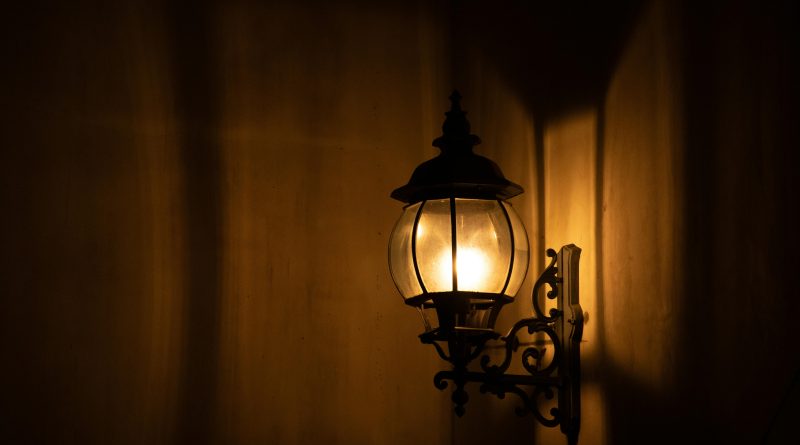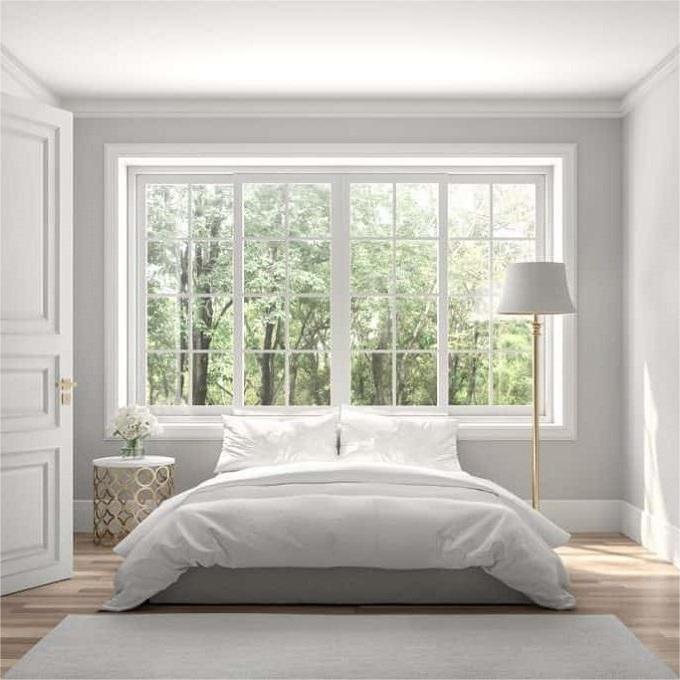Bedroom Wall Light: Creating a Cozy Ambience
The bedroom is a sanctuary, a place where we retreat to at the end of a long day to relax and rejuvenate. The mezohome lighting in our bedrooms plays a crucial role in creating a comfortable and inviting atmosphere. It sets the mood, enhances the overall aesthetic, and can even affect our sleep patterns. One of the best ways to achieve the perfect lighting in your bedroom is by incorporating wall lights into your design.
Wall lights, also known as sconces, are a versatile and stylish lighting option for any bedroom. They can be mounted on the wall, providing both ambient and task lighting. Wall lights come in a variety of styles, sizes, and finishes, allowing you to find the perfect match for your bedroom decor. Whether you prefer a modern and sleek look or a more traditional and ornate design, there is a wall light out there that will suit your taste.
Types of Bedroom Wall Lights: Which One to Choose?
When it comes to choosing the right wall lights for your bedroom, there are several options to consider. Sconces are the most common type of wall light and are available in various styles, including single-arm, double-arm, and multi-arm designs. They can be mounted at eye level on either side of the bed, providing soft and ambient lighting for reading or relaxing.
Another popular option is swing arm lamps. These wall lights have an adjustable arm that allows you to direct the light exactly where you need it. Swing arm lamps are perfect for task lighting, such as reading in bed or working on a laptop.
Picture lights are another type of wall light that can add a touch of elegance to your bedroom. These lights are specifically designed to highlight artwork or photographs on the wall. Picture lights typically have a narrow beam of light that can be adjusted to illuminate the artwork without causing glare.
Each type of wall light has its own pros and cons. Sconces are great for creating a warm and inviting atmosphere, but they may not provide enough light for tasks like reading. Swing arm lamps are versatile and adjustable, but they can take up valuable wall space. Picture lights are perfect for showcasing artwork, but they may not provide enough ambient light for the entire room.
When choosing the right wall light for your bedroom, consider factors such as the size of your room, the height of your walls, and the overall style of your decor. It’s important to strike a balance between functionality and aesthetics to create the perfect lighting scheme for your bedroom.
Factors to Consider Before Installing Wall Lights in Your Bedroom
Before you start installing wall lights in your bedroom, there are several factors to consider. First and foremost, you need to ensure that your electrical system can handle the additional load. If you’re not comfortable working with electricity, it’s best to hire a professional electrician to install the wall lights for you.
Next, consider the placement of the wall lights. The height at which you mount the lights will depend on the height of your walls and the size of your bed. As a general rule of thumb, sconces should be mounted at eye level when you’re sitting or lying in bed. This will ensure that the light is directed where you need it most.
You should also take into account the placement of furniture in your bedroom. Make sure that the wall lights are not obstructed by any furniture or decor items. Consider the overall flow and layout of your room to ensure that the wall lights are positioned in a way that is both functional and visually appealing.
Lastly, consider the style of your existing decor when choosing wall lights. You want the lights to complement the overall aesthetic of your bedroom rather than clash with it. Look for wall lights that match the finish and style of your furniture and other lighting fixtures in the room.
How to Install Bedroom Wall Lights: A Step-by-Step Guide
Installing wall lights in your bedroom may seem like a daunting task, but with the right tools and instructions, it can be a relatively simple process. Here is a step-by-step guide to help you install wall lights in your bedroom:
1. Gather the necessary tools and materials. You will need a screwdriver, wire strippers, electrical tape, wire connectors, and a voltage tester. Make sure you have all the necessary parts and accessories that come with the wall lights.
2. Turn off the power to the circuit you will be working on. Locate the circuit breaker panel in your home and switch off the breaker that controls the power to the area where you will be installing the wall lights.
3. Remove the existing light fixture or switch plate. Use a screwdriver to remove any screws or mounting brackets that are holding the fixture or switch plate in place. Carefully disconnect any wires that are connected to the fixture or switch.
4. Install the mounting bracket for the wall lights. Use a screwdriver to attach the mounting bracket to the electrical box in the wall. Make sure it is securely fastened.
5. Connect the wires. Strip about half an inch of insulation from the ends of the wires coming out of the wall and from the wires on the back of the wall lights. Twist together the matching wires (black to black, white to white, and green or bare copper to green or bare copper) and secure them with wire connectors.
6. Attach the wall lights to the mounting bracket. Line up the screw holes on the back of the wall lights with the holes on the mounting bracket and use a screwdriver to secure them in place.
7. Turn on the power and test the lights. Switch on the breaker that controls the power to the circuit you were working on and use a voltage tester to ensure that there is power flowing to the wall lights.
8. Adjust the position and angle of the wall lights as needed. Once the lights are installed and working, you can adjust them to the desired position and angle. This will ensure that the light is directed where you need it most.
It’s important to follow all safety precautions when installing wall lights in your bedroom. If you’re not comfortable working with electricity, it’s best to hire a professional electrician to do the installation for you.
Bedroom Wall Light Placement: Where to Position Them for Maximum Impact
The placement of wall lights in your bedroom can greatly impact the overall look and feel of the space. Here are some best practices for positioning wall lights in your bedroom:
1. Mount sconces at eye level on either side of the bed. This will provide soft and ambient lighting for reading or relaxing in bed. Make sure that the bottom of the sconces is at least 5 feet above the floor to avoid any glare.
2. If you have a headboard or artwork above your bed, consider mounting picture lights above them to highlight these focal points. Picture lights should be positioned about 12 inches above the artwork or headboard and angled at about 30 degrees.
3. If you have a vanity or dressing table in your bedroom, consider mounting swing arm lamps on either side of the mirror. This will provide task lighting for getting ready in the morning or applying makeup.
4. Consider the overall layout and flow of your bedroom when positioning wall lights. Make sure that they are not obstructed by any furniture or decor items and that they are evenly spaced throughout the room.
5. Experiment with different positions and angles to find the perfect placement for your wall lights. You may need to adjust them several times before finding the right balance between functionality and aesthetics.
Remember, the goal is to create a balanced and visually appealing lighting scheme in your bedroom. The placement of wall lights should enhance the overall ambiance of the space and provide the right amount of light where you need it most.
Choosing the Right Bulbs for Your Bedroom Wall Lights

Choosing the right bulbs for your bedroom wall lights is just as important as choosing the right fixtures. The type of bulb you choose will affect the brightness, color temperature, and energy efficiency of your lighting. Here are some factors to consider when selecting bulbs for your wall lights:
1. Brightness: The brightness of a bulb is measured in lumens. For ambient lighting in your bedroom, choose bulbs with a lower lumen output, around 800-1000 lumens. For task lighting, such as reading or working on a laptop, choose bulbs with a higher lumen output, around 1200-1500 lumens.
2. Color temperature: The color temperature of a bulb is measured in Kelvin (K) and determines the warmth or coolness of the light. For a cozy and relaxing atmosphere in your bedroom, choose bulbs with a lower color temperature, around 2700-3000K. For a brighter and more energizing light, choose bulbs with a higher color temperature, around 4000-5000K.
3. Energy efficiency: Consider choosing LED bulbs for your bedroom wall lights. LED bulbs are more energy-efficient and have a longer lifespan compared to traditional incandescent or halogen bulbs. They may be more expensive upfront, but they will save you money in the long run.
4. Dimmability: If you want to have control over the brightness of your wall lights, make sure to choose bulbs that are dimmable. Not all LED bulbs are dimmable, so check the packaging or product specifications before purchasing.
5. Bulb shape and size: Consider the shape and size of the bulb when choosing bulbs for your wall lights. Some fixtures may require specific bulb shapes or sizes, so make sure to check the specifications before purchasing.
It’s a good idea to experiment with different bulbs to find the right combination of brightness and color temperature for your bedroom. You may also want to consider installing dimmer switches for your wall lights to have even more control over the lighting in your bedroom.
Creative Ideas for Using Bedroom Wall Lights as Decorative Elements
Wall lights can do more than just provide light in your bedroom; they can also serve as decorative elements that enhance your overall decor. Here are some creative ideas for using wall lights to add style and personality to your bedroom:
1. Create a focal point: Use wall lights to create a focal point in your bedroom. Mount them above a piece of artwork, a mirror, or a headboard to draw attention and add visual interest.
2. Highlight architectural features: If your bedroom has unique architectural features, such as exposed brick walls or decorative molding, use wall lights to highlight these elements. Mount them strategically to accentuate the texture and depth of the walls.
3. Add a touch of glamour: Choose wall lights with crystal accents or metallic finishes to add a touch of glamour to your bedroom. These lights can create a luxurious and elegant atmosphere, especially when paired with other decorative elements like chandeliers or mirrored furniture.
4. Create a reading nook: If you have a cozy reading nook in your bedroom, consider mounting swing arm lamps on either side of the chair or sofa. This will provide task lighting for reading while also adding a stylish and functional element to the space.
5. Incorporate them into a themed design: If you have a themed or eclectic bedroom design, use wall lights to enhance the overall theme. For example, if you have a beach-themed bedroom, choose wall lights with seashell or coral motifs. If you have an industrial-style bedroom, choose wall lights with exposed bulbs and metal finishes.
Remember to consider the overall style and aesthetic of your bedroom when choosing wall lights as decorative elements. They should complement the existing decor and enhance the overall ambiance of the space.
How to Control Bedroom Wall Lights: Switches, Dimmers, and Smart Home Technology
Controlling your bedroom wall lights is just as important as choosing the right fixtures and bulbs. There are several options available for controlling the lighting in your bedroom, from traditional switches and dimmers to smart home technology. Here are some options to consider:
1. Traditional switches: The most common way to control wall lights is with traditional light switches. These switches can be mounted on the wall near the entrance to your bedroom or on the headboard for easy access. They allow you to turn the lights on and off with a simple flip of a switch.
2. Dimmer switches: Dimmer switches allow you to adjust the brightness of your wall lights to create the perfect ambiance in your bedroom. They can be installed in place of traditional switches and typically have a sliding or rotating mechanism that controls the brightness level.
3. Remote controls: Some wall lights come with remote controls that allow you to turn them on and off from anywhere in the room. This can be especially convenient if you have a large bedroom or if you prefer to control your lights from the comfort of your bed.
4. Smart home technology: If you want to take your bedroom lighting to the next level, consider using smart home technology to control your wall lights. Smart home systems, such as Amazon Alexa or Google Home, allow you to control your lights with voice commands or through a smartphone app. You can create custom lighting scenes, set timers, and even control your lights when you’re away from home.
When choosing a control option for your bedroom wall lights, consider factors such as convenience, ease of use, and compatibility with other smart home devices you may have in your bedroom. It’s also important to ensure that any electrical work required for installation is done by a professional electrician to ensure safety and compliance with local building codes.
Maintenance Tips for Your Bedroom Wall Lights: Keeping Them Clean and Functional
To keep your bedroom wall lights looking their best and functioning properly, regular maintenance is essential. Here are some tips for cleaning and maintaining your wall lights:
1. Dust regularly: Dust can accumulate on the surface of your wall lights, making them look dull and reducing their brightness. Use a soft cloth or a feather duster to remove any dust or debris from the surface of the lights. Avoid using abrasive cleaners or harsh chemicals, as they can damage the finish of the lights.
2. Clean the bulbs: Over time, bulbs can become dirty or covered in dust, which can affect their brightness. Turn off the power to the lights and allow the bulbs to cool before cleaning them. Use a soft cloth or a bulb cleaning solution to gently wipe away any dirt or debris.
3. Check for loose connections: Periodically check the connections between the wall lights and the electrical wiring to ensure that they are secure. Loose connections can cause flickering or dimming of the lights. If you notice any loose connections, turn off the power to the lights and tighten them using a screwdriver or pliers.
4. Replace burnt-out bulbs: If a bulb in your wall lights burns out, replace it as soon as possible. A burnt-out bulb can affect the overall brightness and functionality of the lights. Make sure to choose a replacement bulb that matches the specifications of the original bulb.
5. Troubleshoot any issues: If any issues arise during the process, it is important to troubleshoot them promptly. This may involve identifying the root cause of the problem, gathering relevant information, and implementing appropriate solutions. It is crucial to communicate effectively with team members and stakeholders to ensure a smooth resolution. Additionally, documenting the troubleshooting process can be helpful for future reference and to prevent similar issues from occurring again. Regularly reviewing and updating troubleshooting procedures can also contribute to a more efficient and effective problem-solving approach.



